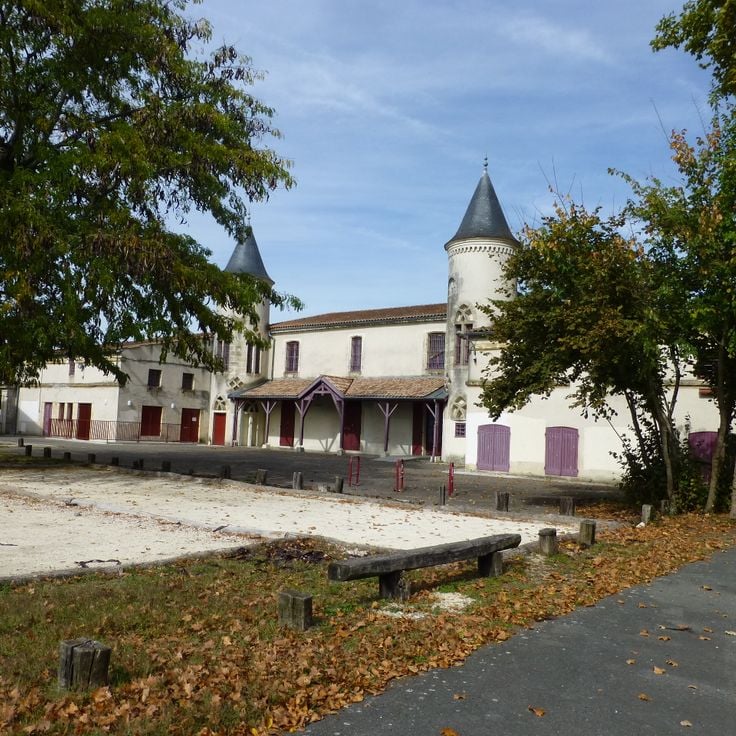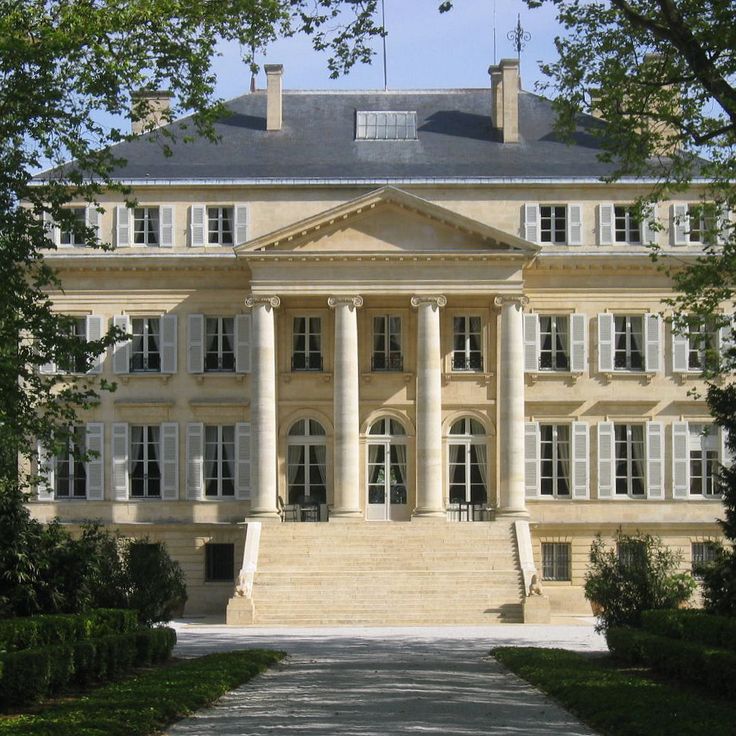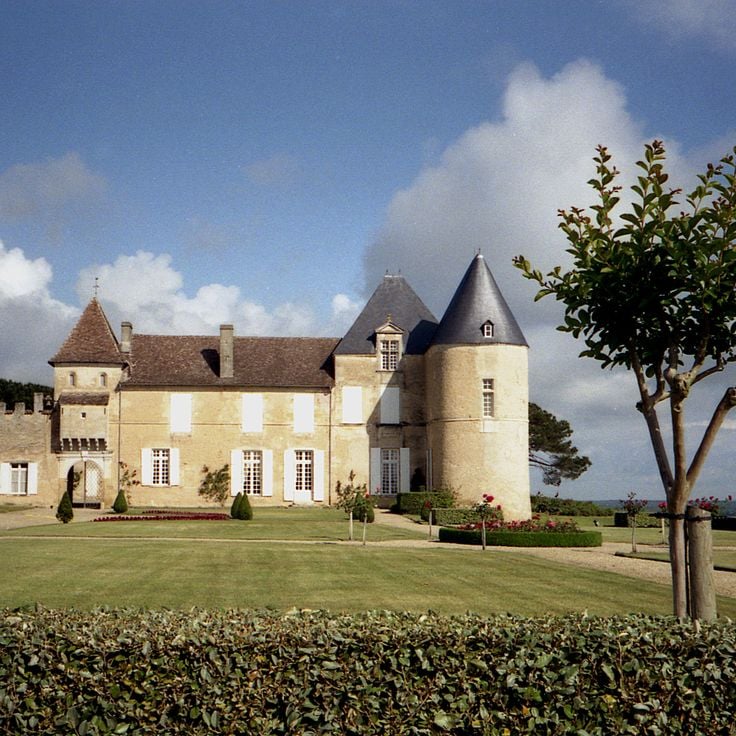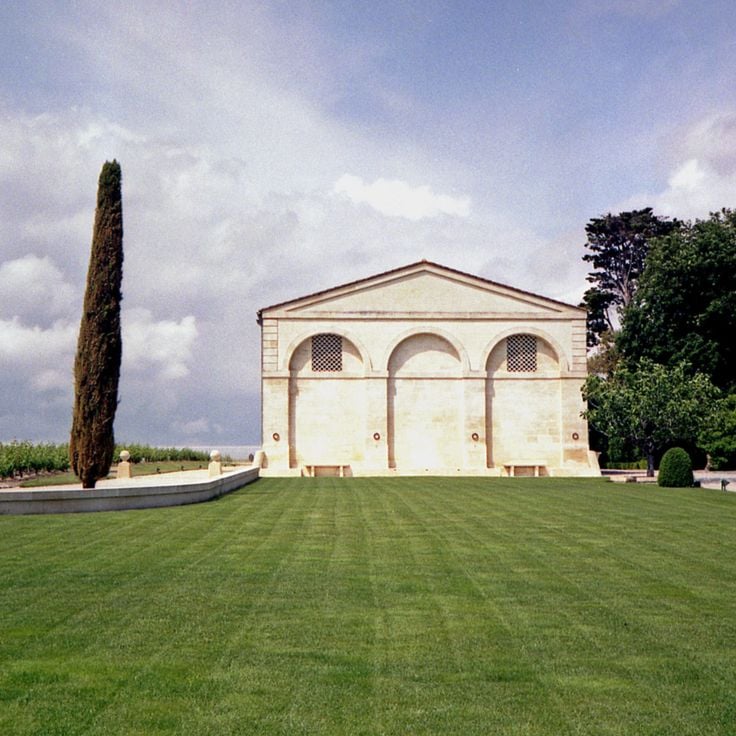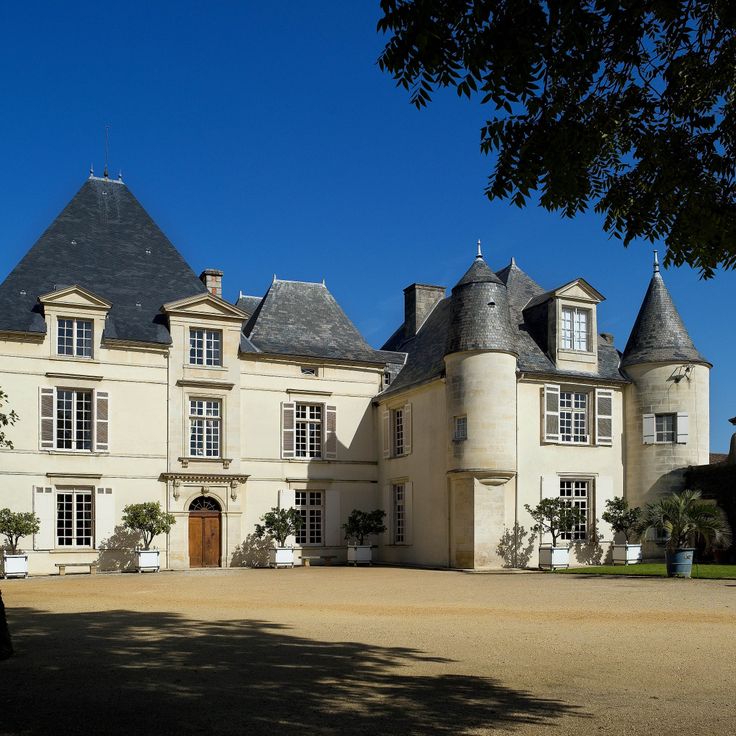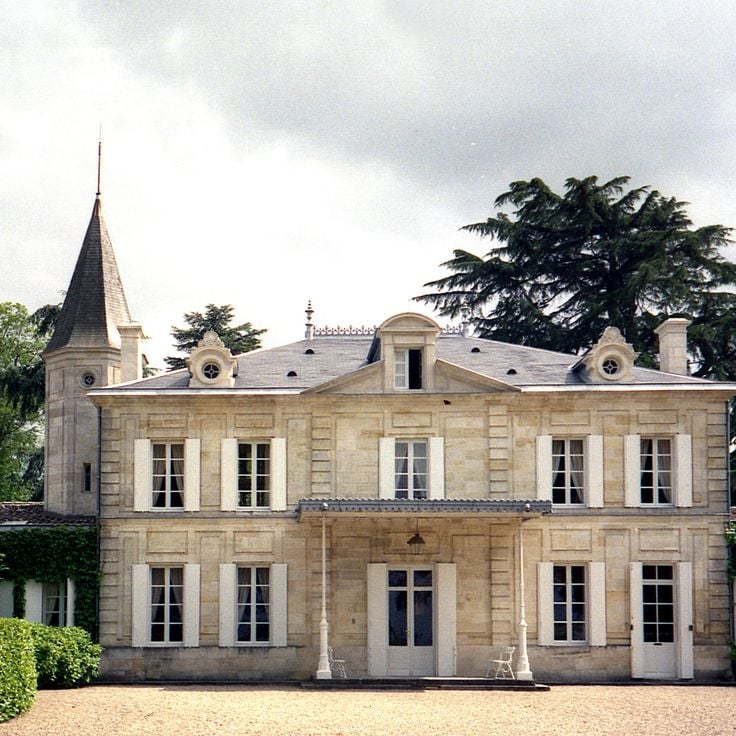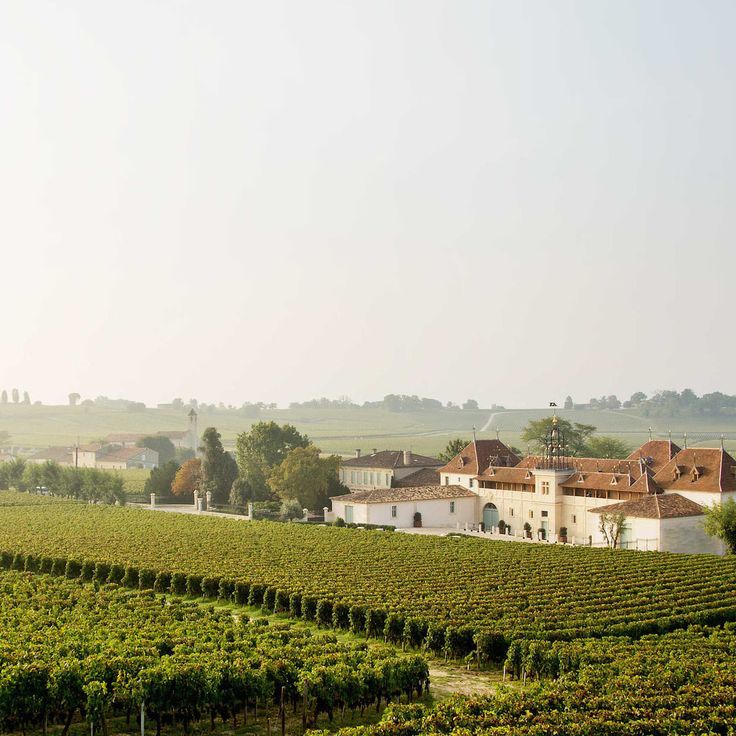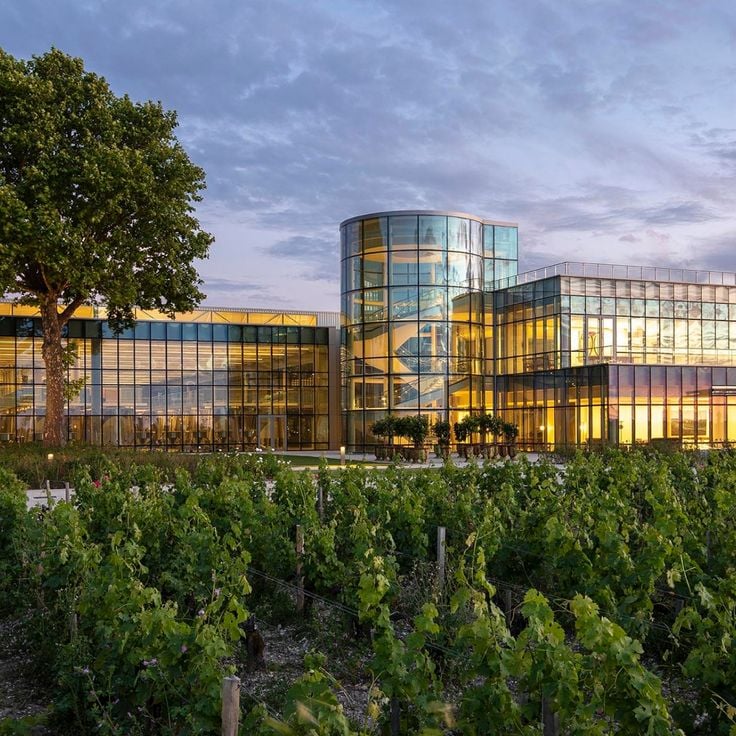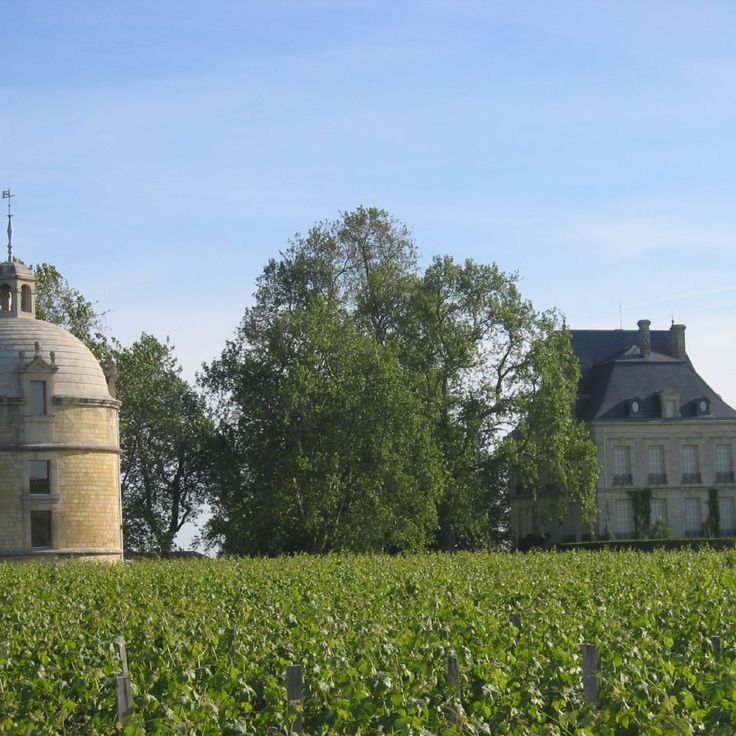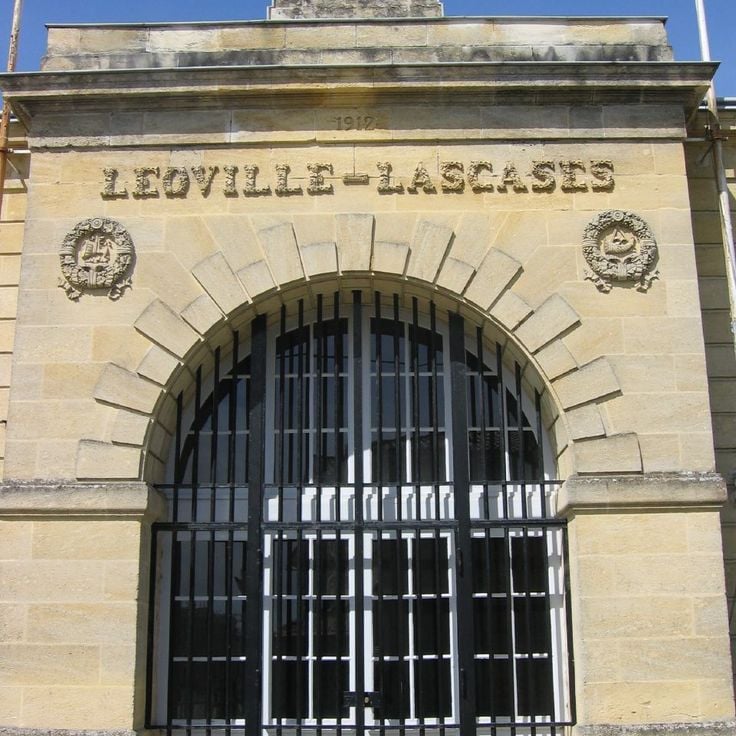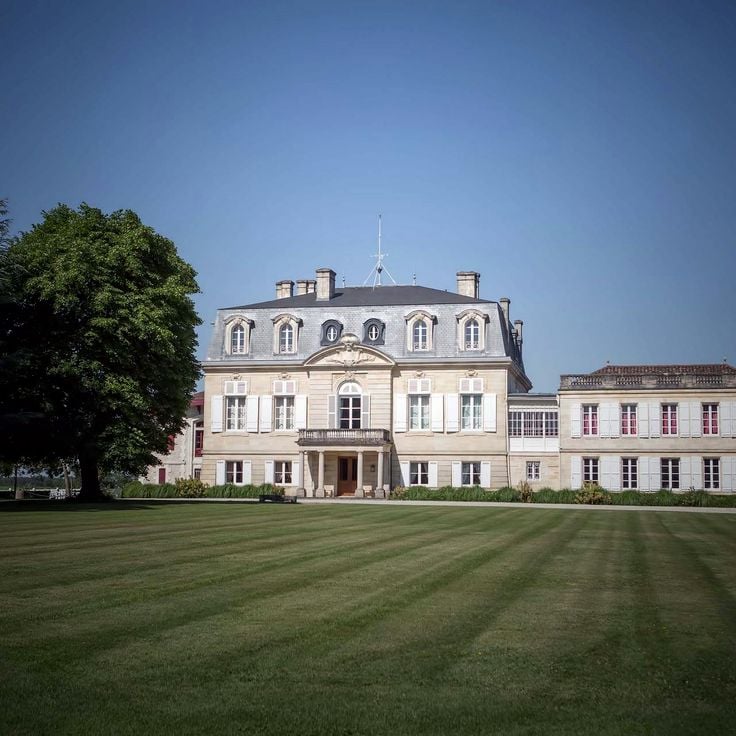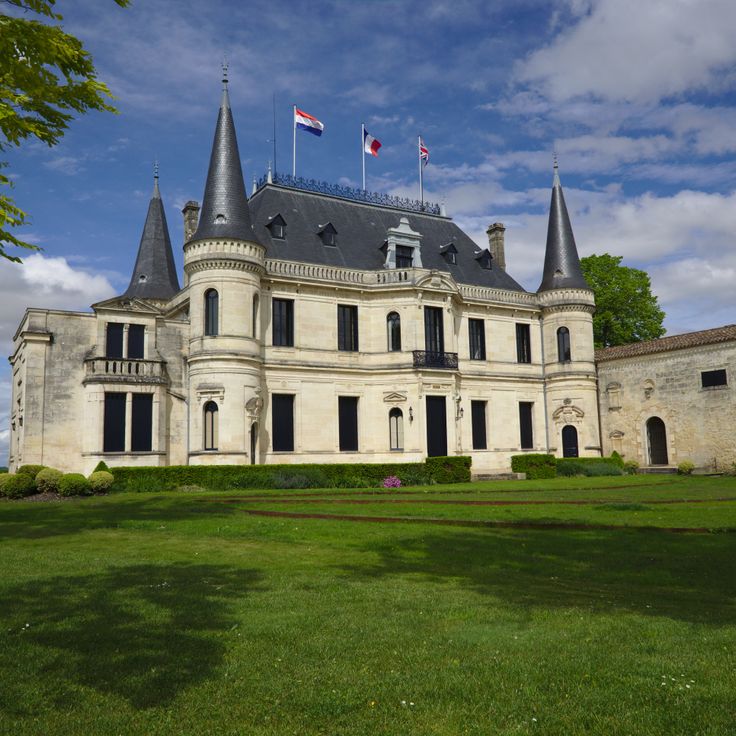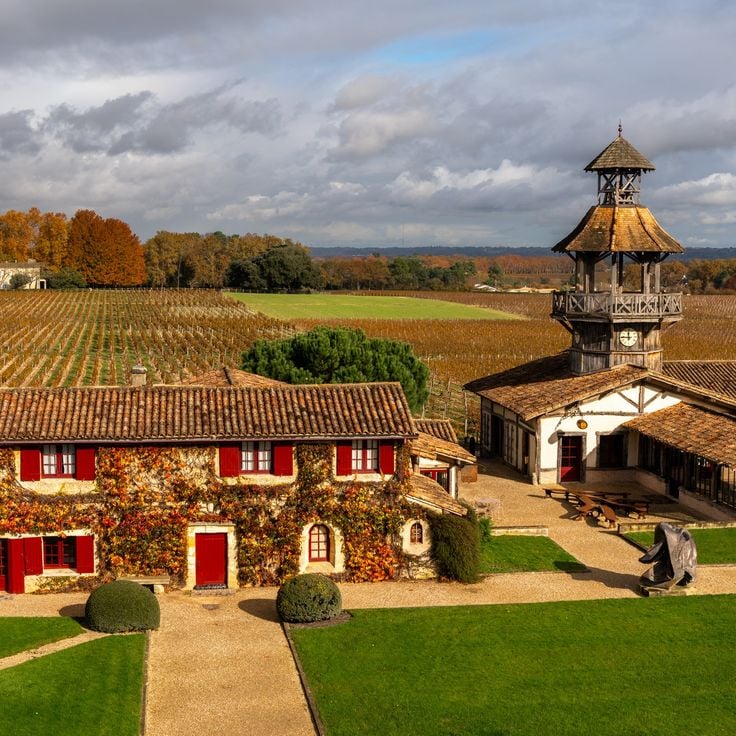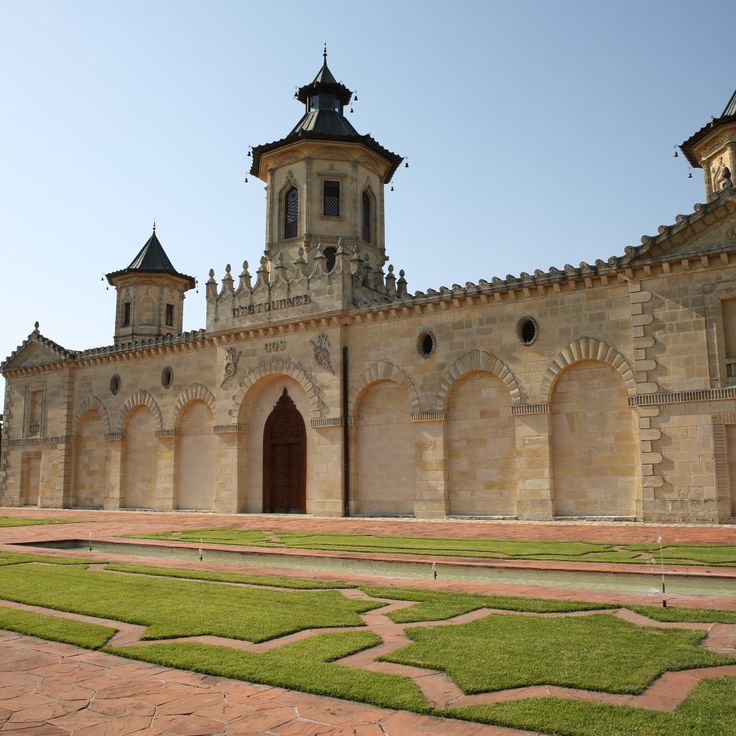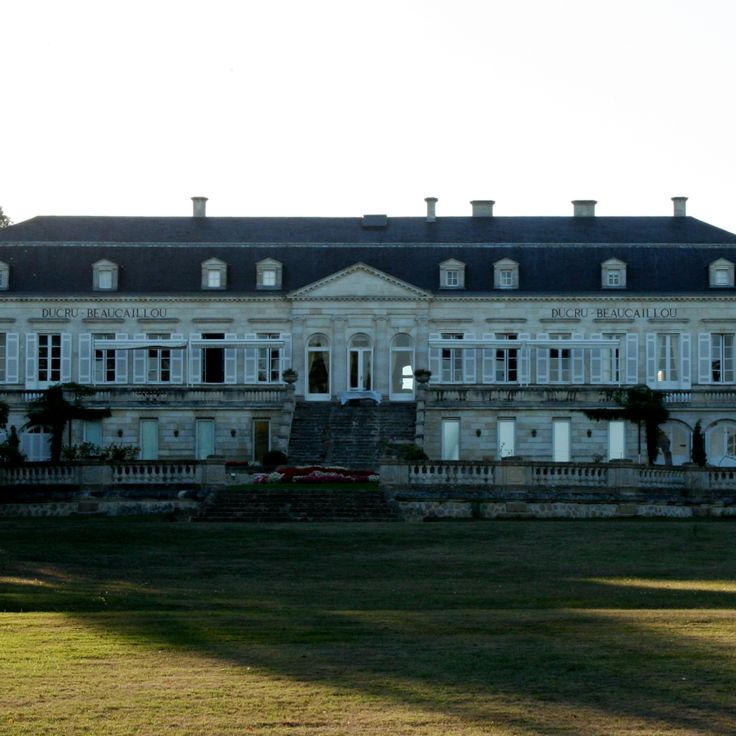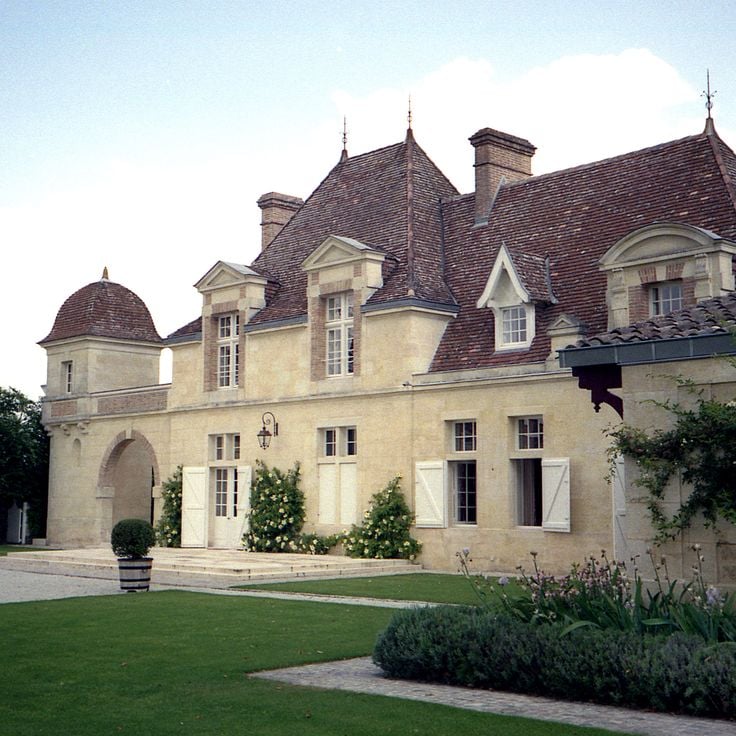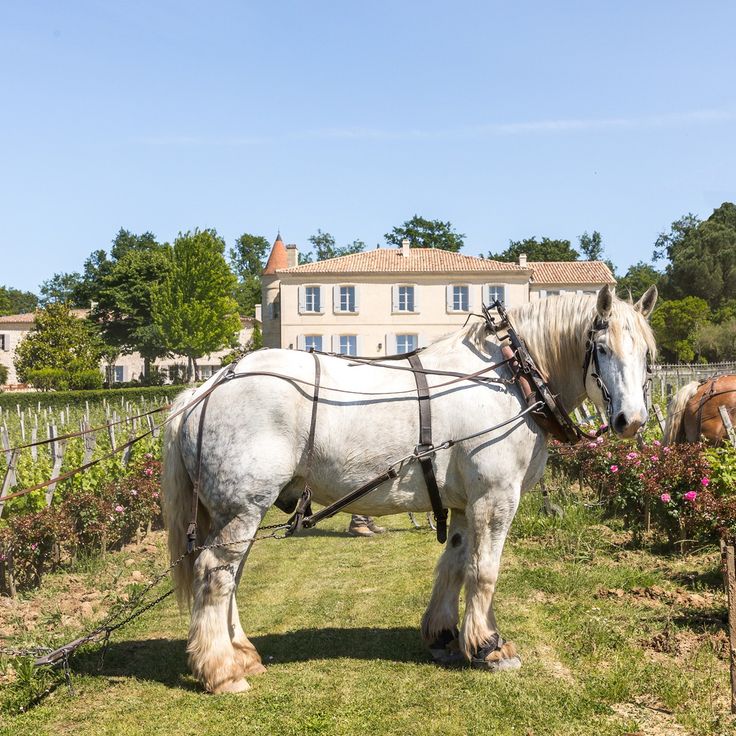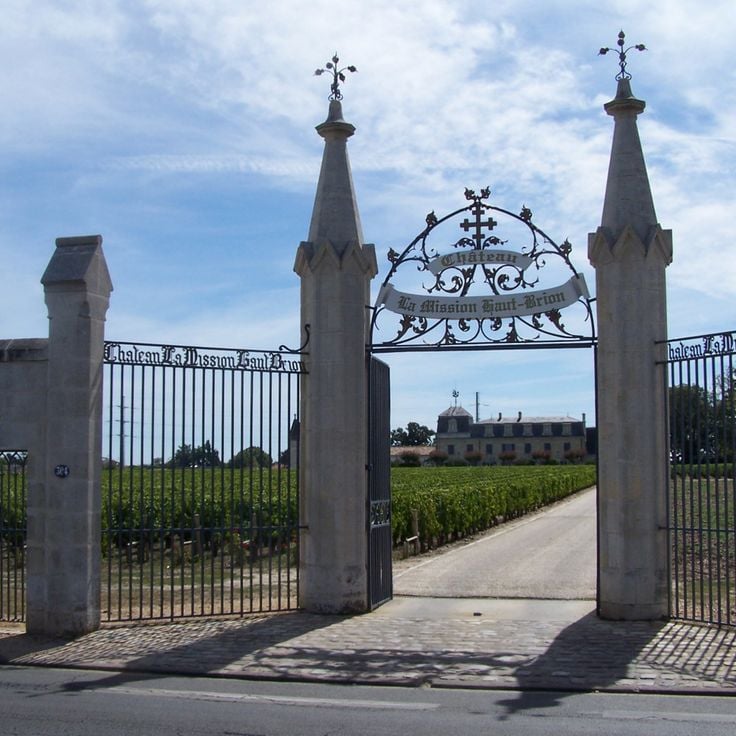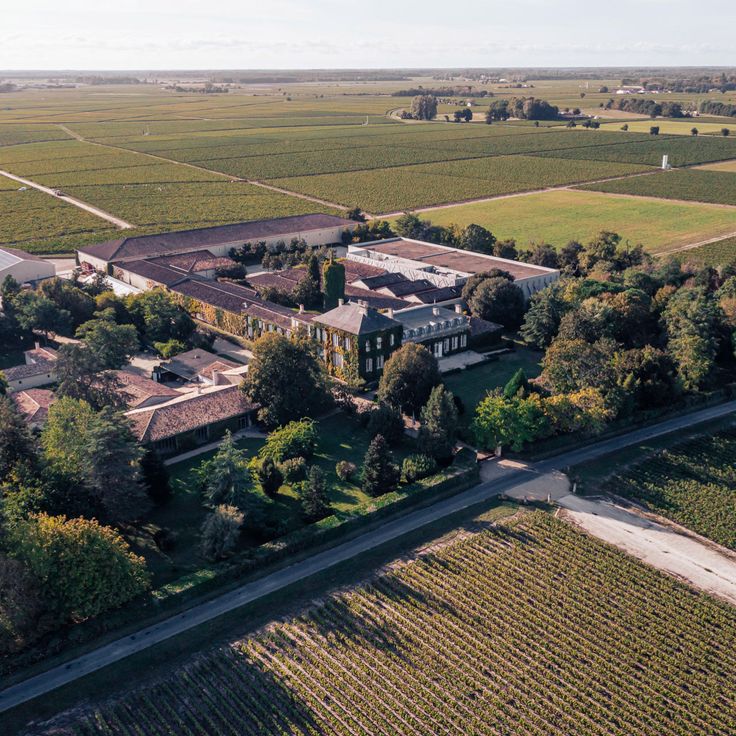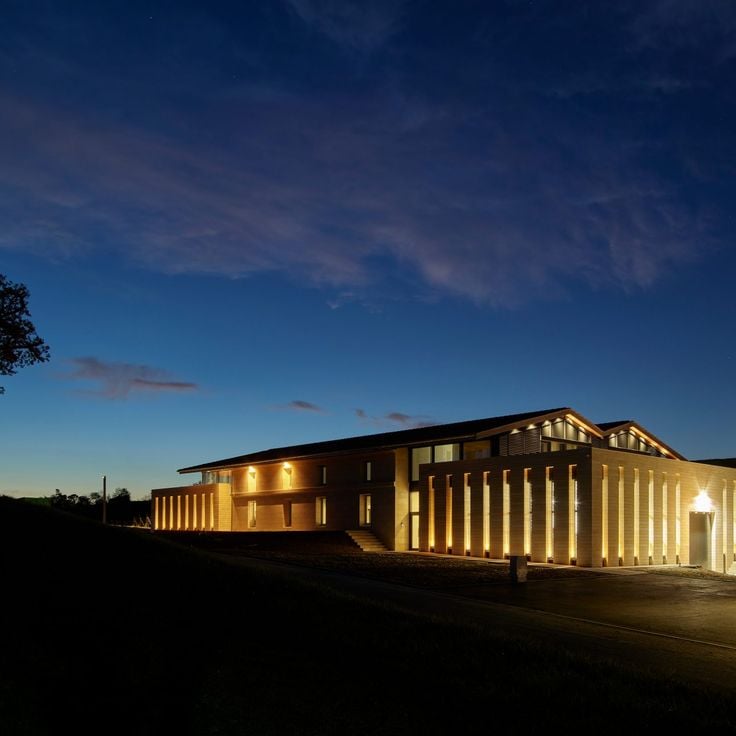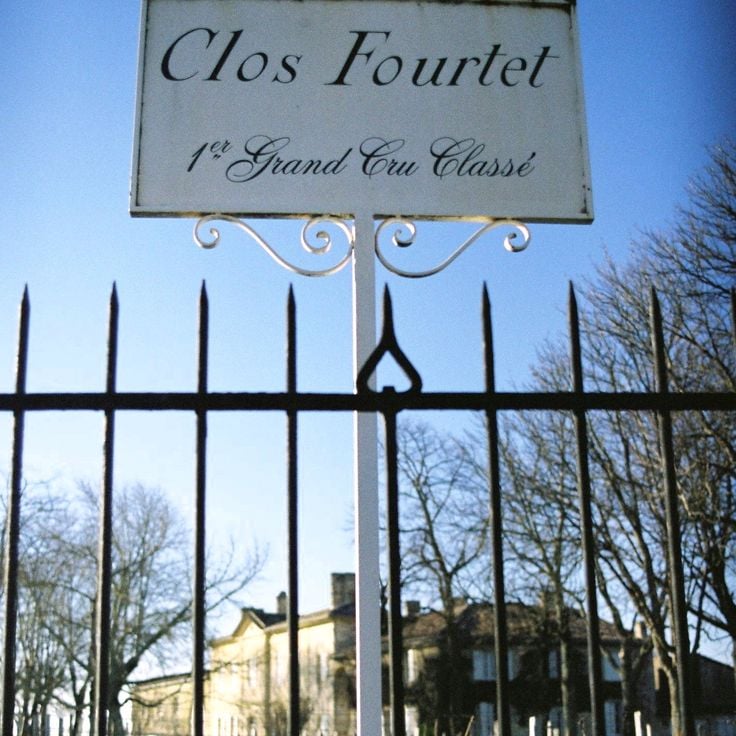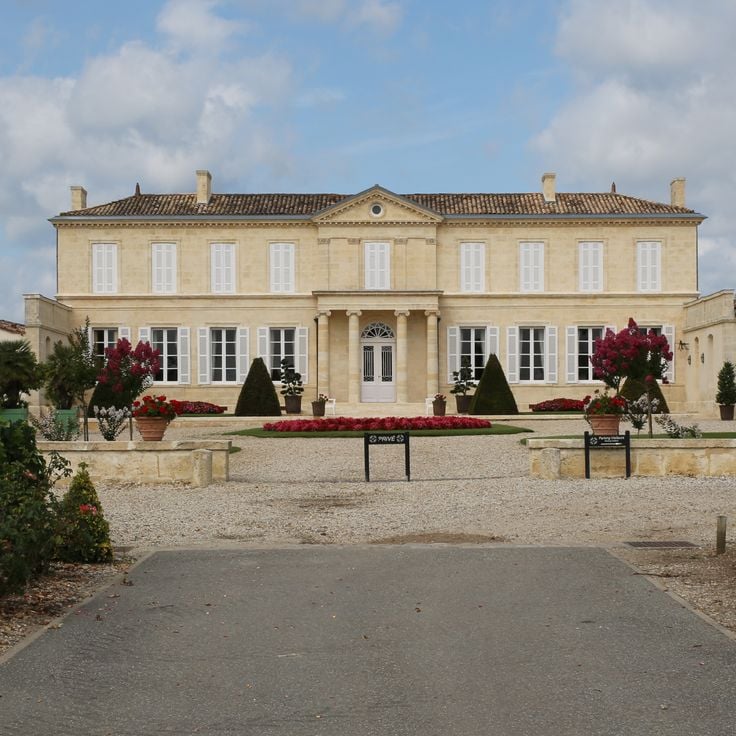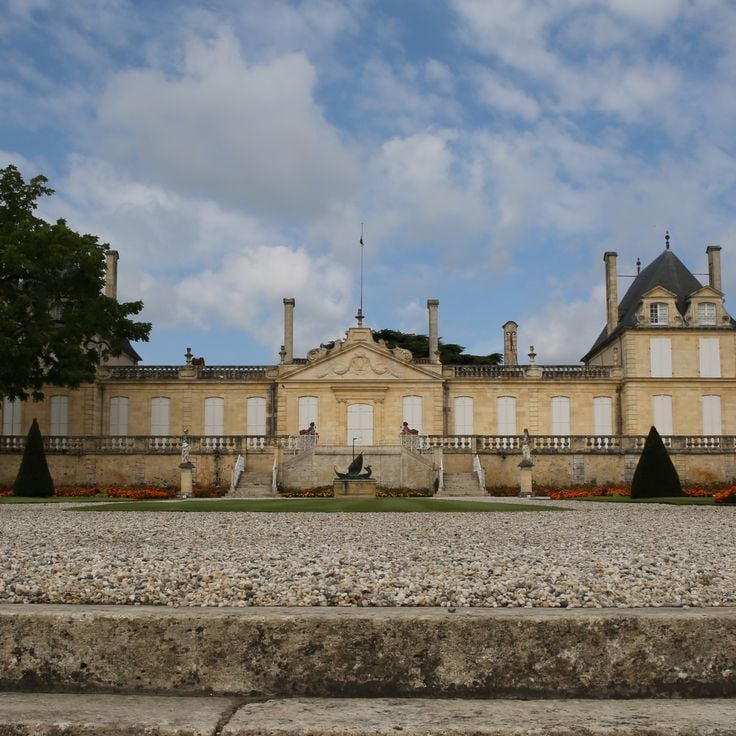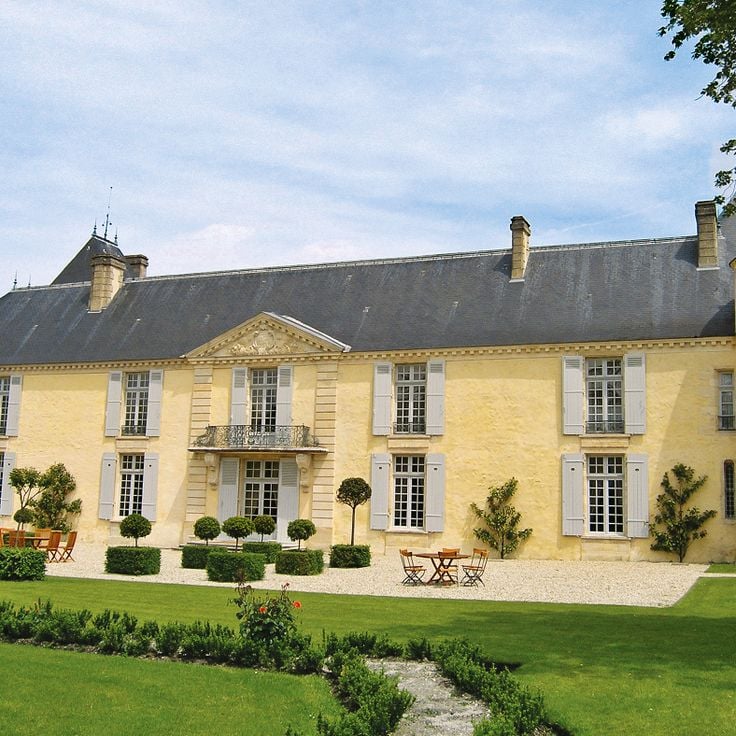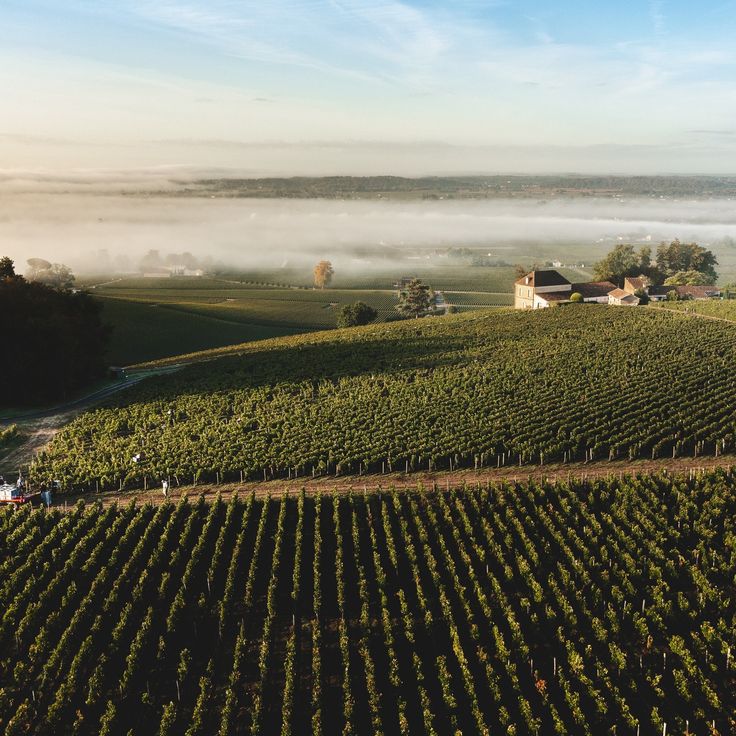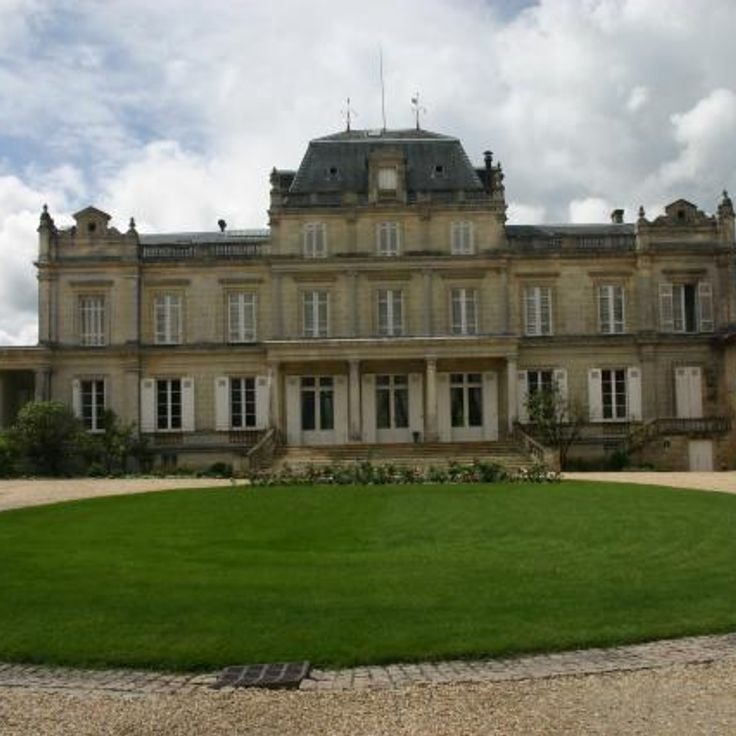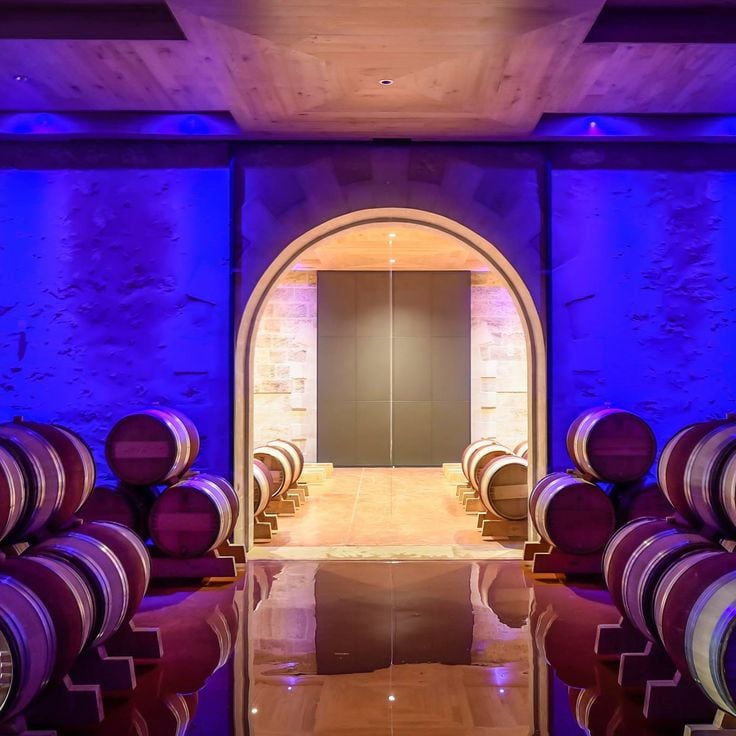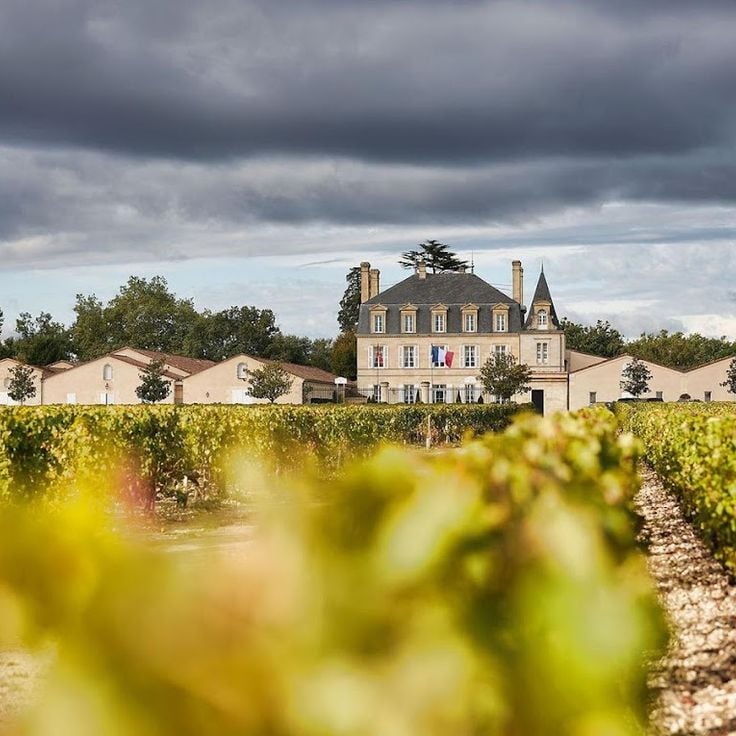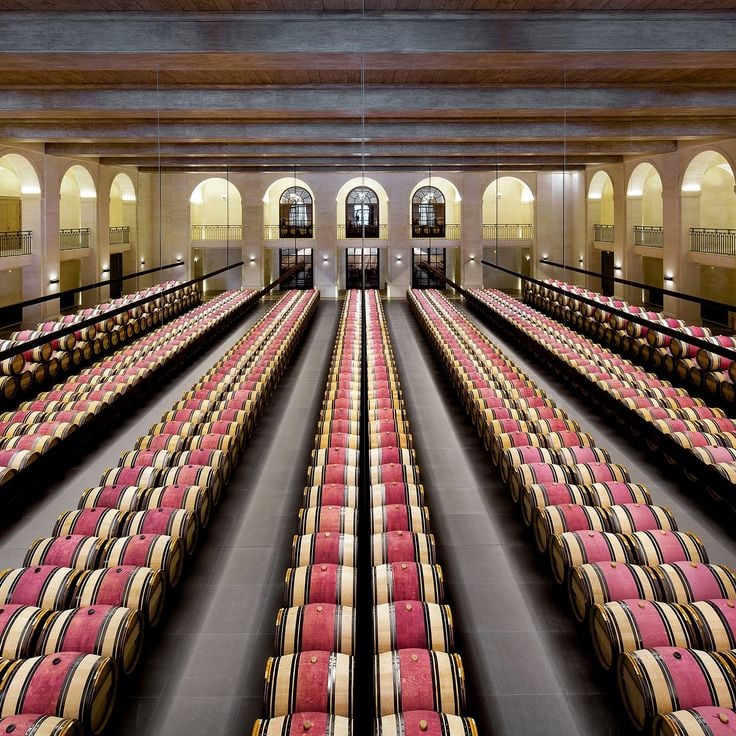The wine estates of Bordeaux spread across the Gironde department and produce wines under more than 60 appellations. The châteaux combine winemaking traditions with modern cellar techniques. Many properties open their doors to visitors, offering tours of vineyards, fermentation rooms, and barrel cellars. The grand estates of the Médoc, such as Château Margaux, Château Latour, or Château Mouton Rothschild, rank among the most recognized addresses in the region. In Saint-Émilion, châteaux cluster around the medieval village. The Entre-deux-Mers area features numerous smaller family operations. Wine routes traverse landscapes of vine rows and historic buildings. The architecture of the châteaux ranges from medieval fortresses to 18th and 19th-century residences. Some estates have commissioned contemporary cellars from architects like Norman Foster or Jean Nouvel. Tasting rooms allow visitors to sample different vintages and blends. Many domains also organize oenology workshops and receptions in their vineyards.
Château Malartic-Lagravière is a wine estate in Pessac-Léognan that has been producing both red and white wines since 1850. The property features modern cellar technology for vinification and aging. The estate holds Grand Cru Classé status in the region and cultivates vineyards on gravelly soil typical of the appellation.
Château Margaux extends across 82 hectares of vineyards in the Margaux appellation and produces Premier Cru Classé wines since the 1855 classification. Cabernet Sauvignon forms the foundation of the blend and provides the wines with their characteristic structure and aging potential. The estate features a neoclassical main building from the early 19th century and modern cellar facilities for vinification.
Château Pape Clément was established in 1305 by Pope Clement V and ranks among the oldest wine estates in the Bordeaux region. The property in the Pessac-Léognan appellation covers 32.5 hectares of vineyards and produces both red and white wines. The red wines are crafted primarily from Cabernet Sauvignon and Merlot, while the white wines feature Sémillon, Sauvignon Blanc, and Muscadelle. The estate holds Grand Cru Classé de Graves status and combines centuries of tradition with modern winemaking techniques. The historical buildings and cellars are surrounded by vineyards that thrive on gravelly soil.
Château d'Yquem is located in the Sauternes appellation and ranks among the most renowned estates for sweet wines globally. The property extends over more than one hundred hectares of vineyards and has produced white dessert wines from Sémillon and Sauvignon Blanc grapes for centuries. The grapes are affected by noble rot, a natural process that increases the concentration of sugar and aromas. Harvesting takes place in several passes by hand, selecting only the most affected berries. The château features historical cellars where the wines age in oak barrels, as well as an eighteenth-century manor house.
Château Lafite Rothschild is a wine estate in the Médoc region, classified as Premier Grand Cru Classé since 1855. The property covers 107 hectares of vineyards, primarily dedicated to growing Cabernet Sauvignon alongside Merlot, Cabernet Franc and Petit Verdot. The wines produced at this château are known for their complexity and aging potential. The Rothschild family acquired the estate in 1868 and has maintained it with respect for traditional winemaking techniques.
Château Mouton Rothschild is a wine estate in the Pauillac appellation of the Médoc region. Classified as Premier Cru Classé since 1973, the property produces red wines from Cabernet Sauvignon, Merlot and Cabernet Franc grapes. Since 1945, the château has commissioned renowned artists such as Picasso, Chagall, Miró and Warhol to design its annual labels. The estate features a museum displaying artworks and historical wine-related objects.
Château Haut-Brion is one of the oldest wine estates in Bordeaux, established in the 16th century. This historic property produces Premier Cru Classé wines across 51 hectares of vineyards in the Pessac-Léognan appellation. The château is one of the five First Growths from the 1855 classification and the only one located outside the Médoc region. The vineyards sit on gravel soils with clay and limestone layers that contribute to the complexity of the wines. The estate produces both red wines from Merlot, Cabernet Sauvignon and Cabernet Franc, as well as white wines.
Château Cheval Blanc ranks among the most prestigious wine estates in Saint-Émilion, holding the Premier Grand Cru Classé A designation. The property cultivates 39 hectares of vineyards planted primarily with Cabernet Franc and Merlot grape varieties. The château produces wines recognized for their elegance, complexity, and exceptional aging potential. The estate combines traditional winemaking methods with modern cellar techniques to craft its renowned wines.
Château Angélus is a wine estate in Saint-Émilion that has been owned by the de Boüard de Laforest family for eight generations. The property received Premier Grand Cru Classé B status in 1996 and was elevated to Premier Grand Cru Classé A in 2012. The vineyards cover 39 hectares on the southern slopes of Saint-Émilion and are planted primarily with Merlot and Cabernet Franc. The château produces wines recognized for their depth, complexity, and aging potential.
Château Lynch-Bages is a wine estate in Pauillac that extends across 100 hectares of vineyards. The property focuses on producing wines from Cabernet Sauvignon grapes, known for their aging potential. This château ranks among the classified estates of the Pauillac appellation and maintains traditional winemaking methods in the Médoc region.
Château Latour is a Premier Cru Classé estate in Pauillac with a winemaking tradition dating back to 1331. The property spans 47 hectares of vineyards along the Gironde estuary and produces primarily Cabernet Sauvignon wines. The distinctive 17th-century stone tower marks the historic center of the estate. The vineyards benefit from the gravelly soils of the Médoc and proximity to the river.
Château Léoville Las Cases covers 97 hectares of vineyards in the Saint-Julien appellation. This estate was classified as a Deuxième Grand Cru Classé in 1855 and ranks among the most respected producers in the Médoc. The vineyard parcels border Château Latour directly and benefit from gravelly soils with excellent drainage. Cabernet Sauvignon dominates the grape variety composition, complemented by Merlot and Cabernet Franc. The estate produces several wines, including the Grand Vin du Château Léoville Las Cases and Le Petit Lion du Marquis de Las Cases as a second wine.
Château Pontet-Canet is a winery in Pauillac that has been operating under biodynamic principles since 2010. The estate covers 81 hectares of vineyards and produces wines under the Pauillac appellation. The grape varieties include Cabernet Sauvignon, Merlot, Cabernet Franc, and Petit Verdot. The château was classified as a Cinquième Cru Classé in 1855 and has been owned by the Tesseron family since 1975.
Château Palmer is located in the Margaux appellation on the left bank of the Gironde. This estate produces classified wines with a high proportion of Merlot grapes in the blend. The vineyards extend over gravelly soils typical of the region. The château was acquired in the 19th century by a British general and has carried his name since then. Palmer's wines have received awards at international tastings and are among the recognized productions of the Margaux appellation.
Château Smith Haut Lafitte is a wine estate located in the Pessac-Léognan appellation within the Graves region. The property combines modern cellar technology with traditional winemaking methods. The château produces both red and white wines and holds the classification of Crus Classés de Graves. The estate manages approximately 78 hectares of vineyards and practices organic viticulture. In addition to wine production, Château Smith Haut Lafitte operates a luxury hotel and spa, offering wine enthusiasts an immersive experience among the vineyards.
Château Cos d'Estournel is a wine estate located in the Saint-Estèphe appellation of the Médoc region. Founded in 1811, the property is distinguished by its remarkable architecture inspired by Asian buildings. The facade displays ornate oriental decorations and pagodas that founder Louis Gaspard d'Estournel added after his trading voyages to India. The estate produces red wines from Cabernet Sauvignon, Merlot, Cabernet Franc and Petit Verdot grape varieties. The vineyards cover 91 hectares on gravelly soils and border directly onto the first growth Château Lafite Rothschild in Pauillac.
Château Ducru-Beaucaillou is a wine estate located in the Saint-Julien appellation of the Médoc region. The property has been producing Grand Cru red wines since 1700. The estate covers 75 hectares of vineyards planted primarily with Cabernet Sauvignon and Merlot grape varieties. Annual production reaches approximately 240,000 bottles. The château was classified as a Deuxième Grand Cru Classé in 1855 and ranks among the leading wine estates of the Bordeaux region.
Château Rauzan-Ségla is a historic wine estate located in the Margaux appellation, cultivating vines across 66 hectares. The vineyards are situated on gravel and limestone soils, which are particularly suitable for producing characterful red wines. The estate produces approximately 200,000 bottles annually and belongs to the classification of Deuxièmes Grands Crus Classés from 1855. The grape varieties include primarily Cabernet Sauvignon and Merlot, complemented by smaller portions of Cabernet Franc and Petit Verdot.
Château Troplong Mondot occupies an elevated position at 110 metres altitude and covers 43 hectares of vineyards. This estate produces red wines from Merlot and Cabernet Franc grape varieties. The elevated location provides optimal conditions for the vines and contributes to the quality of the wines. The property is among the classified estates of the Saint-Émilion appellation and combines traditional viticulture techniques with modern cellar practices.
Château La Mission Haut-Brion operates 32 hectares of vineyards in the Pessac-Léognan appellation. The estate comprises 29 hectares dedicated to red grape varieties and 3 hectares to white varieties. The vines grow on warm gravel soils characteristic of the Graves region, providing excellent drainage and heat retention. Located across from Château Haut-Brion, the property produces classified wines from traditional Bordeaux grape varieties.
Château Figeac is located on the right bank of the Dordogne and covers 40 hectares of vineyards on gravelly soil. The estate belongs to the Saint-Émilion Grand Cru appellation and was elevated to Premier Grand Cru Classé A status in 2022. The grape varieties include Cabernet Sauvignon, Cabernet Franc and Merlot. Aging takes place in oak barrels following traditional methods. The property features an 18th-century château and wine cellars that are open to visitors.
Château Talbot covers 107 hectares in the heart of the Saint-Julien appellation. The estate has held Grand Cru Classé status since 1855 and cultivates primarily Cabernet Sauvignon, complemented by Merlot, Cabernet Franc and Petit Verdot. The vineyards benefit from the gravelly soils of the Médoc peninsula, which ensure optimal drainage. In addition to its main wine, the property produces Château Talbot Blanc, one of the rare white wines of the region.
Château Péby Faugères is located in the Saint-Émilion Grand Cru appellation and manages 7.45 hectares of vineyards on limestone soils. The estate produces its wines exclusively from Merlot grapes. The parcels are situated on a plateau with southwestern exposure and benefit from optimal ripening conditions. The property belongs to the Guisez family and follows an artisanal approach to winemaking with limited yields and meticulous work in the vineyard.
Clos Fourtet is a Premier Grand Cru Classé B estate in Saint-Émilion, with origins dating back to the 15th century. The property covers 20 hectares of vineyards planted on a limestone plateau adjacent to the medieval town. The 18th-century underground cellars are among the largest in Saint-Émilion and provide optimal conditions for wine aging. The vineyard is planted primarily with Merlot and Cabernet Sauvignon, which thrive on the limestone-rich soils that characterize this terroir.
Château Guiraud has been producing Sauternes wines since 1766 in the appellation of the same name. The estate manages 85 hectares of vineyards planted primarily with Sémillon and Sauvignon Blanc grape varieties. The vines benefit from the specific climatic conditions of the region that favor the development of noble rot. The château is among the classified estates of Sauternes and produces sweet white wines.
Château Branaire-Ducru is located in the Saint-Julien appellation in the Médoc and holds the classification of Quatrième Cru Classé from 1855. The estate manages 60 hectares of vineyards on gravelly soils and produces red wines from Cabernet Sauvignon, Merlot, Petit Verdot and Cabernet Franc. The wines of Château Branaire-Ducru are known for their structure and aging potential. The property features modern winemaking facilities and traditional barrel cellars. Tours allow visitors to learn about the wine production process and the history of the château.
Château Beychevelle is situated in the heart of the Médoc and ranks among the most recognized estates of the Saint-Julien appellation. This 17th-century property features a neoclassical main building with a symmetrical facade and French gardens extending toward the Gironde estuary. The estate produces Grand Cru Classé wines from approximately 90 hectares of vineyards planted primarily with Cabernet Sauvignon and Merlot. The wines of Château Beychevelle are characterized by their elegance and aging potential. Visitors can tour the historic building and participate in tastings of different vintages.
Château d'Issan is a historic wine estate in the Margaux appellation. This 17th-century property produces classified wines with pronounced depth and finesse. The vineyards extend over gravelly limestone soils that give the wines their characteristic structure. The château combines traditional winemaking methods with precise cellar techniques. The wines display typical aromas of blackcurrant, violet and cedarwood with silky tannins.
Château Suduiraut has been producing Sauternes wines since 1580 in the commune of Preignac. The estate extends over soils composed of gravel and sand on a limestone subsoil. This geological composition contributes to the complexity of the sweet wines produced here. The vineyards benefit from the regional climatic conditions that favor the development of noble rot, which is essential for the production of Sauternes.
Château Pavie covers 37 hectares on a southeast-facing slope in Saint-Émilion. The estate produces Premier Grand Cru Classé wines from Merlot, Cabernet Franc, and Cabernet Sauvignon grapes. The grapes are hand-harvested and the wines age between 18 and 32 months in new oak barrels. The cellar combines traditional concrete vats with modern vinification techniques. The property has belonged to the Perse family since 1998.
Château Giscours operates 95 hectares of vineyards on gravelly and sandy soils in the Margaux appellation. The wines from this estate feature notes of red fruits and spices. The property is among the classified estates of the Bordeaux region and produces red wines from traditional grape varieties including Cabernet Sauvignon, Merlot, and Petit Verdot.
Château La Conseillante operates its vineyard on clay soils where Merlot and Cabernet Franc are the primary grape varieties cultivated. The grapes are hand-harvested to ensure fruit quality. Located in the Pomerol appellation, the estate produces wines that reflect the geological characteristics of the terroir. The winemaking process combines traditional methods with contemporary approaches to vinification.
Château Grand-Puy-Lacoste is a wine estate in the Pauillac appellation of the Médoc region. The property was classified as a Grand Cru Classé in the fifth tier during the 1855 classification. The vineyard covers approximately 90 hectares on gravelly plateaus near the Gironde estuary. Cabernet Sauvignon represents about 75 percent of the plantings, complemented by Merlot and a small proportion of Cabernet Franc. The wines mature in French oak barrels and develop flavors of blackcurrant, cedar, and tobacco over time. The estate has been owned by the Borie family since 1978.
Château Montrose is a wine estate located in the Saint-Estèphe appellation of the Médoc. This property combines modern cellar technology with regional winemaking methods to produce wines designed for extended aging. The vineyards span gravelly soils with views over the Gironde estuary. The winery features temperature-controlled fermentation tanks and oak barrels for maturation. This château is among the classified estates of the region and welcomes visitors by appointment for cellar tours and tastings.
Château Phélan Ségur manages 70 hectares of vineyards in the Saint-Estèphe appellation in the northern Médoc. The wines are produced from Cabernet Sauvignon and Merlot grapes following traditional regional methods. The estate holds the Cru Bourgeois Exceptionnel classification and produces primarily red wines known for their structure and aging potential.
Château Kirwan manages 37 hectares of vineyards on gravelly soils within the Margaux appellation. The estate employs a gravity-flow system in its cellar, which moves grapes and must gently without mechanical pumping. The parcels are situated on the characteristic Günzian gravel terraces of the Médoc. This property produces classified Margaux wines and has been ranked as a Troisième Cru Classé since 1855. The vineyards are planted primarily with Cabernet Sauvignon, Merlot, and Cabernet Franc.
